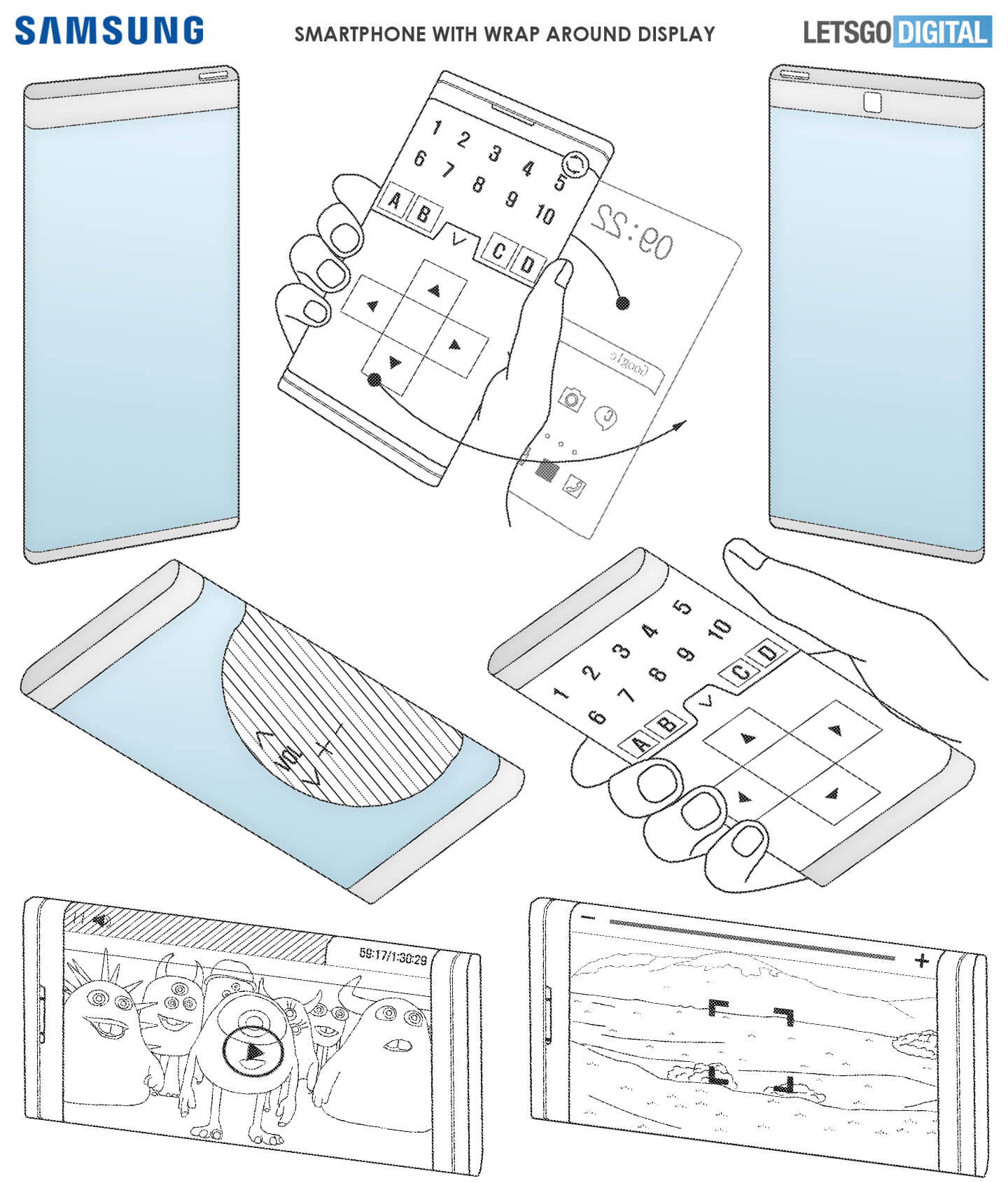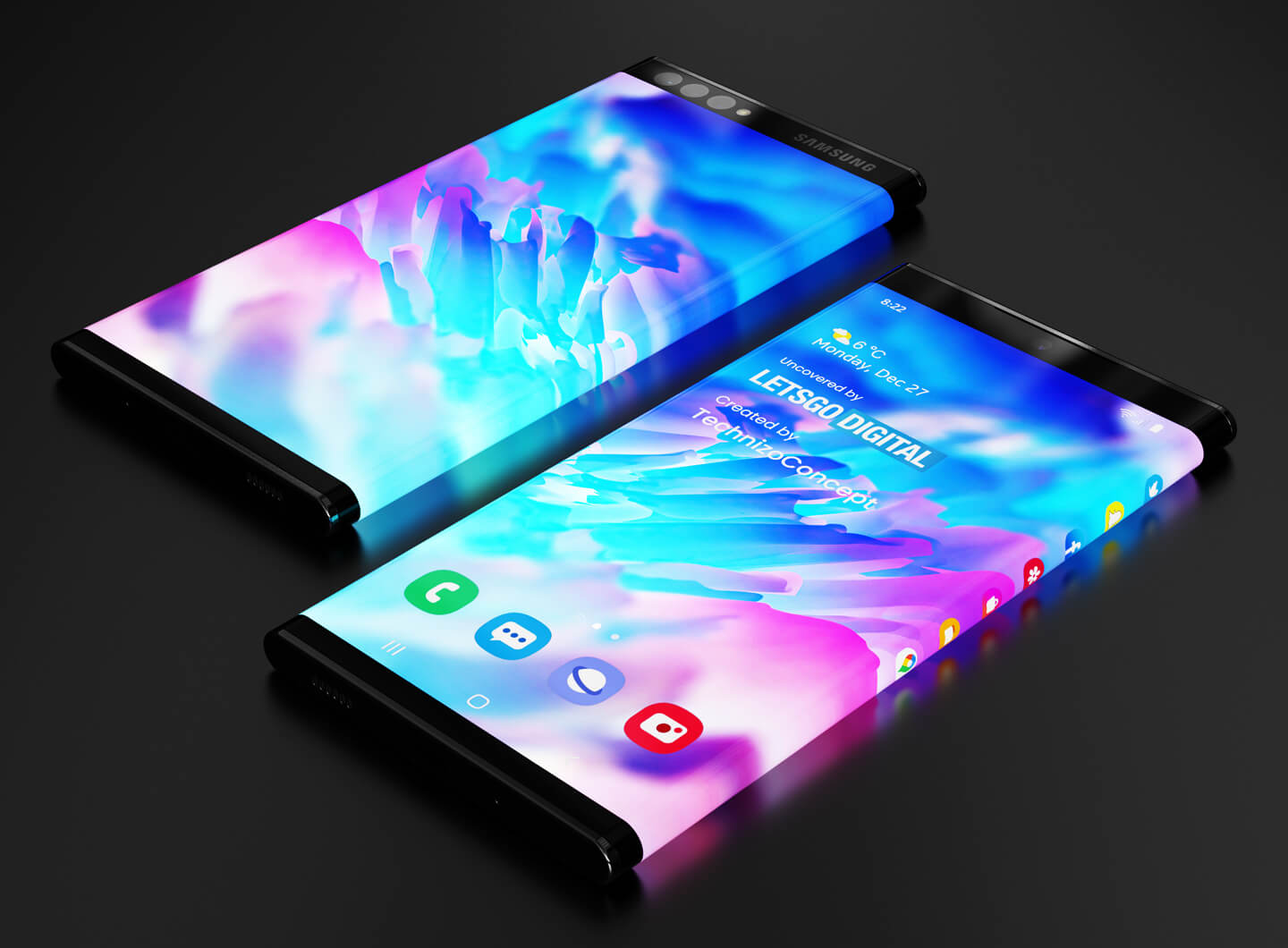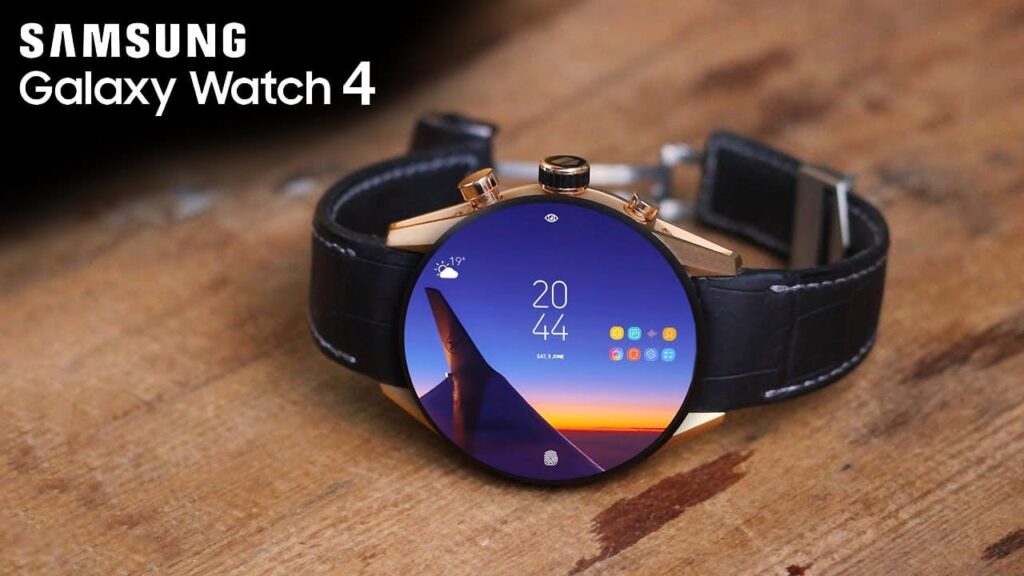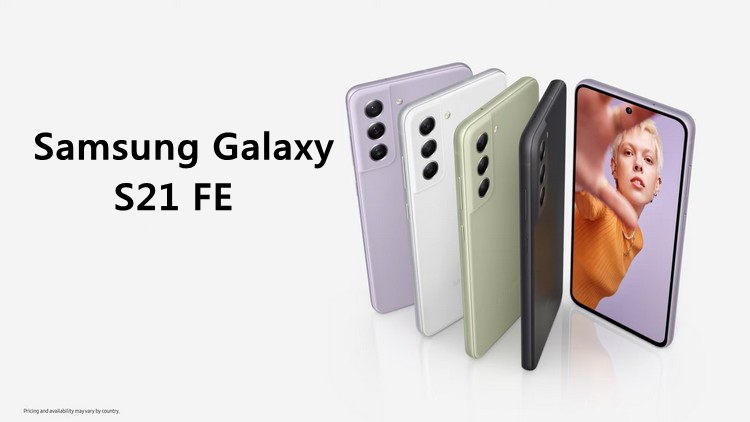
it has been two years since Xiaomi announced the Mi Mix Alpha. It was the first and as yet only surround display smartphone that has been officially introduced. Despite this, several smartphone manufacturers have since filed a patent for a mobile phone with a flexible screen that is wrapped in whole or in part around the case. Some time ago LetsGoDigital reported on an Honor smartphone with wrap-around display. There was also a double side Oppo smartphone discussed.
Another leading smartphone manufacturer that has now recorded various phone designs where the back also consists of display surface is Samsung. In 2018, LetsGoDigital reported for the first time on a Samsung phone with a double-sided screen. A new patent shows that Samsung still sees a future in such devices.

Samsung Galaxy smartphone with wrap-around display
In July 2021, Samsung Electronics filed a patent with the USPTO (United States Patent and Trademark Office) for a ‘Method and apparatus for operating functions of electronic device having flexible display’. The 46-page documentation was released on November 18, 2021 and is also included in the WIPO (World Intellectual Property Office) database for global protection of the patented technology.
Where previously the documentation was mainly focused on the flexible screen, this time the focus is on the control options. To get a better feel for this special smartphone, graphic designer Parvez Khan, aka Technizo Concept, has created a series of 3D renders based on Samsung’s patent. The YouTube video below has also been designed by Technizo Concept.
The wrap-around display smartphone from Samsung can be operated via the touchscreen and by pen input, as stated in the detailed description. Samsung has already shown with the Galaxy Z Fold 3 that the company is able to make the S Pen compatible with a flexible screen. The Z Fold 3 is the very first foldable phone with S Pen support.

The patented Samsung Galaxy phone has a large flexible display that covers both the front, the sides and the back of the phone. A relatively wide frame edge is visible at the top, where the necessary sensors and cameras can be incorporated. The power button is placed on the top – as there is no room on the sides to place physical buttons.
As a result, the volume keys have been replaced by virtual keys. The documentation also talks about applying virtual game keys and shoulder buttons. The shoulder buttons are placed on the side, making them easily accessible while gaming in landscape mode.
Icons and shortcuts are displayed on the right side. On the other side, status symbols such as time, battery indicator, and network strength may be displayed. Through the settings, this can also be reversed – depending on whether the user is right- or left-handed.
One or more cameras are placed on both the front and the back. For the 3D renders, we assumed one front camera and three rear cameras – similar to Samsung’s current high-end models.
Because the phone has a display surface on both sides, both cameras can be used to take selfies as well as regular photo and video recordings. The display acts as a viewfinder to determine the correct composition.
With a simple swipe gesture, the user can move content from the display on the front to the screen on the back – and vice versa. Depending on the application, content can also be shown on both sides. Consider, for example, viewing the Photo Gallery. One side shows the entire photo gallery, while on the other side one selected photo can be shown.
Of course, this does not only apply to the Photo Gallery. In the patent documentation, numerous operating scenarios are mentioned, also for the internet browser, the messaging application, watching videos etc. The phone can detect how the user is holding the device, in order to adjust the interface accordingly.

Double-sided Samsung smartphone
Whether Samsung actually intends to present a double-sided smartphone in the future remains unknown for the time being. It is striking that the documentation is becoming more and more extensive. The South Korean manufacturer has now come up with numerous scenarios in which a double-sided screen can offer a solution. Recently, Samsung also captured an extra versatile foldable phone, with a wrap-around display and an S Pen dock.
However, there are also several disadvantages to think of, because the device has a large screen on both sides, the display is more likely to be damaged – even if you carry it in your bag or pocket with you. In addition, using a phone case will be tricky, due to the form factor.
The costs of such a wrap-around display smartphone are also not tender. Although the Xiaomi Mi Mix Alpha was never released in the end, the device did get a suggested retail price of no less than € 2,550. Partly because of the production complexity, Xiaomi has finally refrained from an actual release. However, as the use of flexible displays increases, development/production costs will undoubtedly decrease. It is possible that this offers opportunities for the future.
Note to publishers : The 3D product renders of the Samsung wrap-around display smartphone are created by Parvez Khan, aka Technizo Concept in collaboration with LetsGoDigital. The images are based on a patent filed by Samsung Electronics. This product is not for sale.





